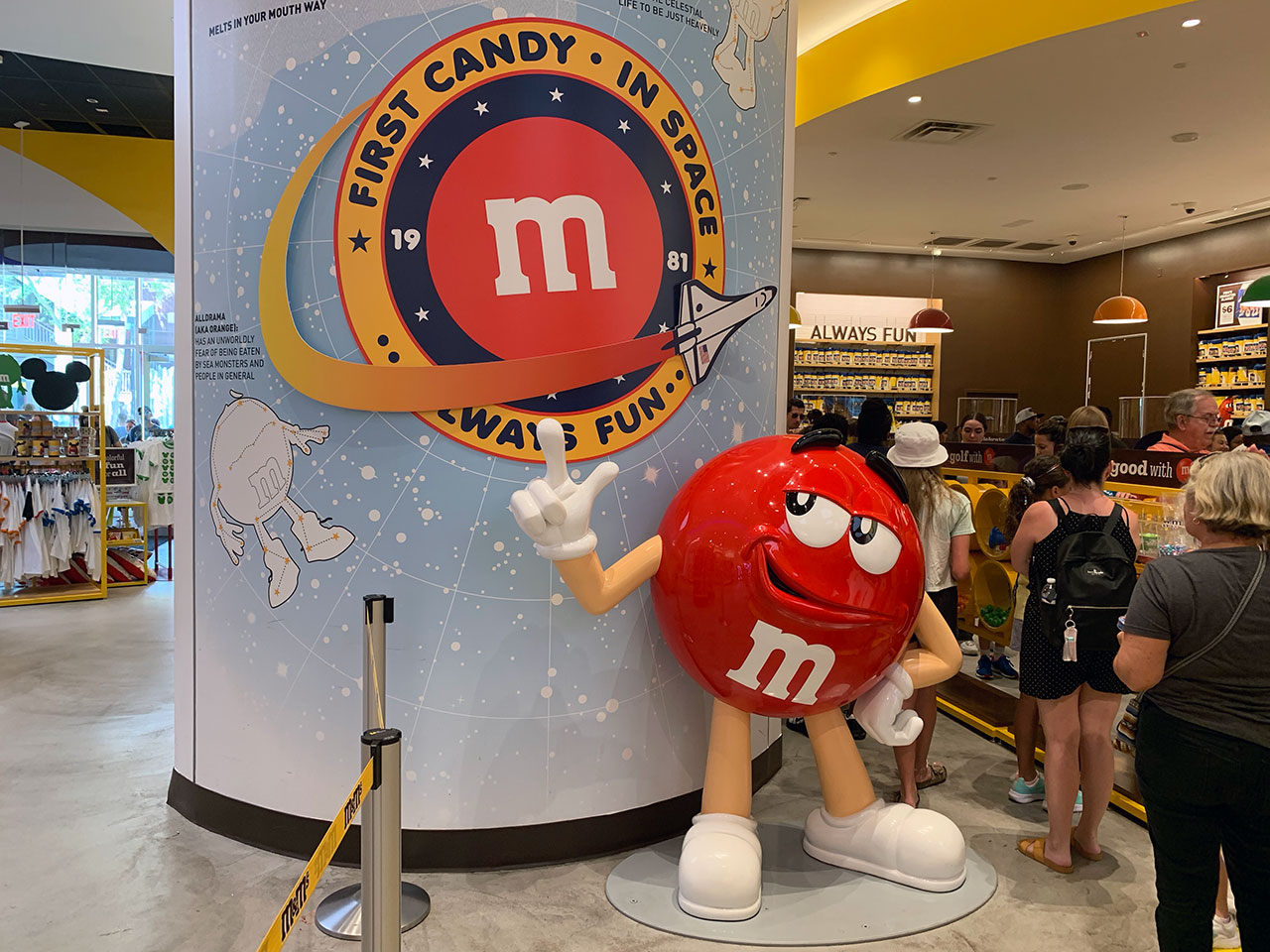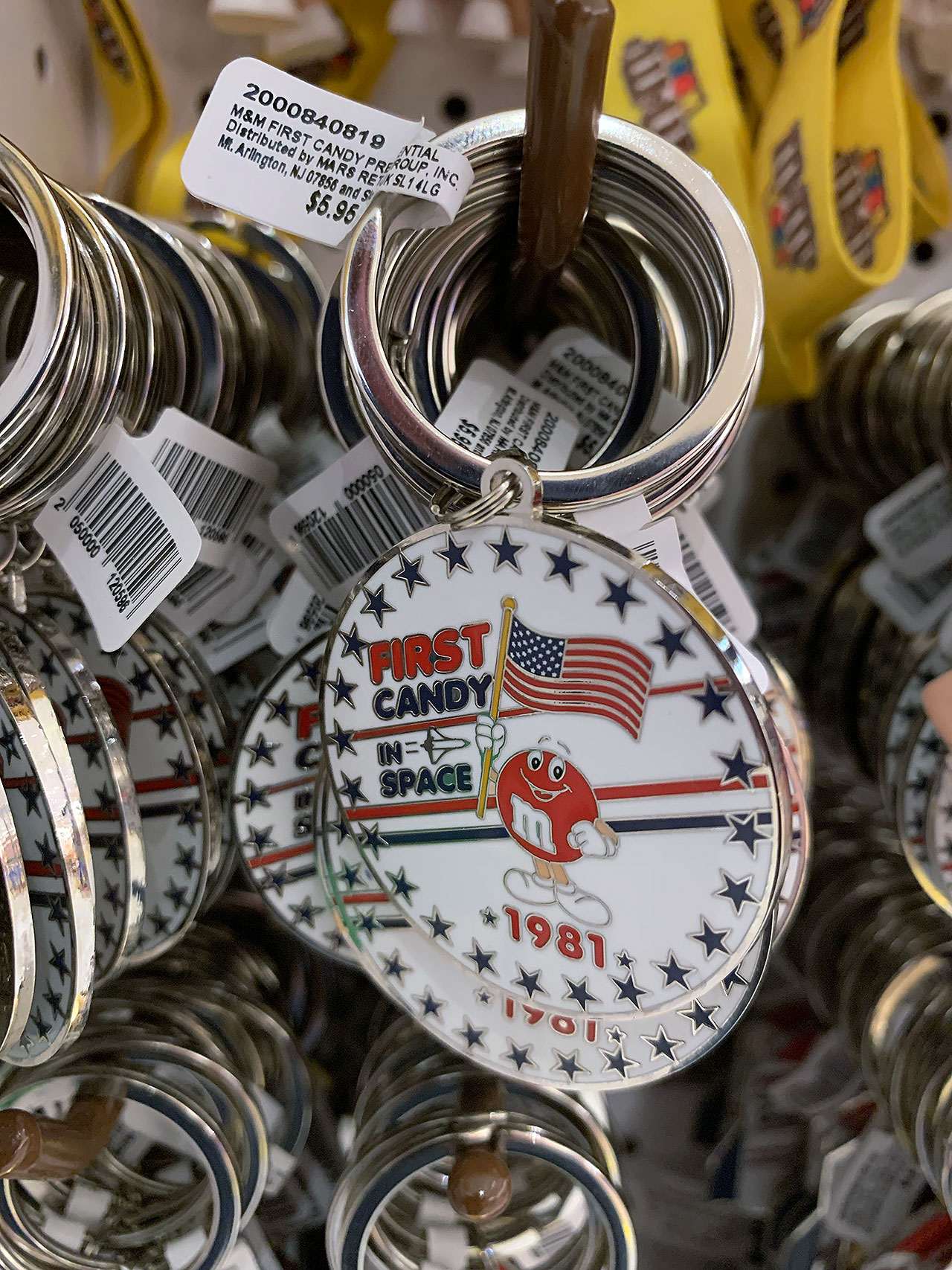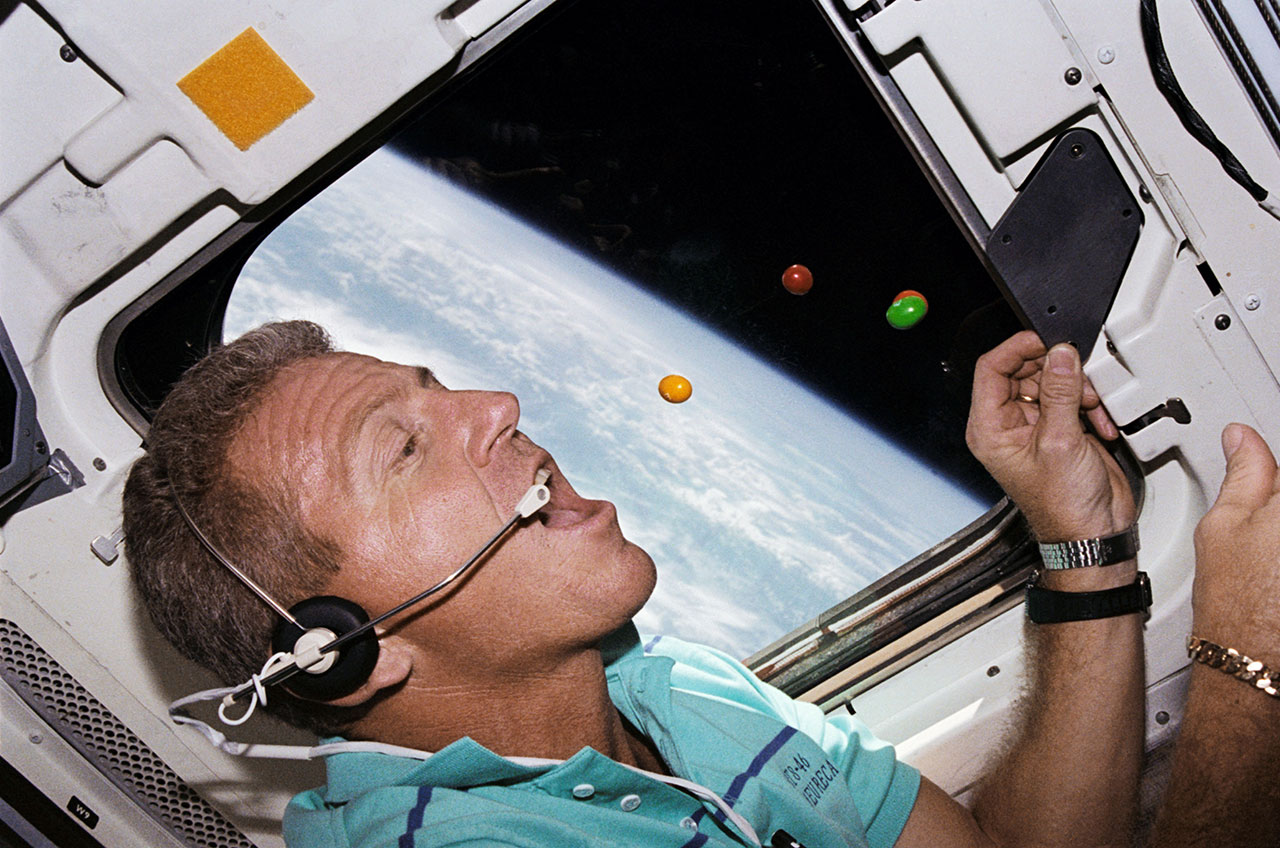Jack Lousma doesn’t remember having M&M’s while in space.
As a NASA astronaut, Lousma was in command of the third space shuttle mission 40 years ago this week. Together with pilot Gordon Fullerton, Lousma put the reusable orbiter Columbia through its paces, continuing to test and prove the vehicle in Earth orbit.
STS-3 set a number of records. It was the first space shuttle to launch with an unpainted external fuel tank, forgoing aesthetics for a greater lift capability. It was the first mission to carry out science experiments on the mid-deck of the crew cabin. And, when it came time to return home on March 30, 1982, it became the first and only space shuttle to touch down at the White Sands Space Harbor in New Mexico, avoiding flooding at the primary landing site in California and opting not to attempt a different type of historic landing in Florida.
“We were offered the brand-new, unused, 15,000-foot [4,570 meters] hard-surfaced runway, with alligators at both ends, at Kennedy Space Center. I declined as I did not think we were ready for that yet, but we suggested the lakebed runway at the White Sands Missile Range instead, where we had done most of our approach and landing practice,” Lousma said in a recent interview with collectSPACE.com.
NASA’s space shuttle program in pictures: A tribute
Lousma and Fullerton were also the first-ever astronauts to take candy with them into space. Earlier crews had fudge and sweet desserts like pudding, but STS-3 was the first to launch with sugar confections aboard. Specifically, they were the first astronauts to fly M&M’s, the colorful “candy-coated chocolates” (as NASA labeled them, trying to avoid the appearance of endorsement) made by Mars, Inc. since 1941.
Not that Lousma remembers doing so. (Fullerton died in 2013 at the age of 76.)
“To make a long story short, I do not recall any M&M’s candies being on the STS-3 mission and cannot vouch for their presence either being onboard or consumed,” said Lousma. “I sure have enjoyed the Earth-based versions over the years — and perhaps the space-based ones, as well, but who knows because it cannot be accurately denied!”
NASA’s records are clear on the subject, but as it turns out, Lousma is not alone in forgetting about this particular first. So has Mars, Inc.
Space food evolution: How astronaut chow has changed in photos
Aboard the shuttle since … when?
Earlier this year, Mars Inc. opened its newest M&M’s Store at Disney Springs in Florida. The Orlando location, one of only seven in the world, features a “Wall of Chocolate,” exclusive Mickey Mouse M&M’s designs and an opportunity for fans to create their own custom versions of the candies.
The store also has a number of photo ops, including one devoted to M&M’s being the “First Candy in Space.” Guests can pose next to a four-foot-tall Red M&M character, who points up to a large space shuttle adorned logo. Nearby, fans can find related souvenirs for sale, which like the exhibit, displays that M&M’s first flew in space in 1981.
STS-3 launched on March 22, 1982.

The store display is not the first time that Mars, Inc. has claimed M&M’s first left the planet on the first shuttle launch 41 years ago. In 2004, M&M’s ran a print ad showing two human-sized spacesuits propped up next to a smaller, more bulbous suit clearly intended for one of the brand’s M&M’s characters.
The advertisement read, “Aboard the shuttle since 1981.”
The same “fact” was cited by Mars, Inc. when the company commemorated the final space shuttle launch by gifting the crew and members of Mission Control with custom-printed candies in 2011.
“M&M’s have been a part of every space shuttle mission since Columbia first launched on April 12, 1981,” Mars, Inc. officials wrote in a release at the time.
If you go back far enough in the archives, though, you can find that Mars was aware that STS-3 was M&M’s start in space — even if it was only on the mission’s launch day in 1982.

“One of the foods astronauts Gordon Fullerton and Jack Lousma will be able to enjoy during their seven-day mission on board ‘Columbia’ are the familiar M&M’s Plain Chocolate Candies,” the company’s press release, distributed at the launch site, read. “NASA chose the candy-coated chocolates because of their ‘thermal stability characteristics.'”
“In other words, they were chosen because they melt in your mouth, not in your hand, or, in this case, your hot space shuttle.”
‘Colorful fun’
According to the 1982 release, Mars donated M&M’s to be tested for spaceflight. Not only did they pass the “100-degree temperatures” of the shuttle’s food storage area, but they were able to maintain their integrity, aesthetics and taste after being stored in a high-temperature environment for six months.
That shelf-life turned out to be a good thing. Lousma did not remember eating M&M’s in space because he never did. The four packages of the candies stowed in Columbia’s STS-3 pantry came back to Earth 10 days later, having never been opened by Fullerton or him.
According to a NASA technical memorandum summarizing the food flown on the first 25 space shuttle missions, it was not until the next mission, STS-4, that M&M’s were first eaten in space. Four packages of the candy-coated chocolates were launched on Columbia — enough for crewmates Thomas “Ken” Mattingly and Henry “Hank” Hartsfield to each have two — but only three returned intact. (It is unknown who ate the first M&M in space; Hartsfield died in 2014 and Mattingly could not be reached in time for this article.)
NASA’s summary also includes a few additional firsts for M&M’s in space.
Plain M&M’s were first joined in space by Peanut M&M’s (“candy-coated chocolate peanuts”) on STS-41B, the tenth shuttle mission and fourth flight of the orbiter Challenger, in 1984. Peanut M&M’s were first eaten in space on STS-41D, the first flight of the orbiter Discovery, that same year.
STS-41D was also the first time that both Plain and Peanut M&M’s moved from being only flown in the pantry to also being included on astronauts’ pre-set menus. Payload specialist Charlie Walker was the first crew member to request (but again, not eat) Plain M&M’s, whereas Discovery’s commander, Hank Hartsfield, asked for and ate both his packs of Peanut M&M’s.
(The first astronaut to request Plain M&M’s on his menu and eat them was STS-51I mission specialist Mike Lounge in 1985.)

Additional M&M’s flavors flew on later space shuttle missions and the candy continued to make history, even beyond the winged orbiters. M&M’s, for example, were the first candy to fly on a privately funded spacecraft, SpaceShipOne in 2004, and M&M’s remain an astronaut-favorite today aboard the International Space Station.
And it all began on board STS-3 40 years ago, as Mars, Inc. acknowledged in a statement provided to collectSPACE. The company said its internal historians are “reviewing the date discrepancy” in their promotional materials.
“M&M’S has been bringing people together for more than 80 years, and we’re proud of the iconic moments our brand has added colorful fun to — including being the first candy to fly in space,” Mars, Inc. said.
Click through to collectSPACE to see an accounting of the number of M&M’s packages flown and returned on each of the first 25 space shuttle missions.
Follow collectSPACE.com on Facebook and on Twitter at @collectSPACE. Copyright 2022 collectSPACE.com. All rights reserved.

